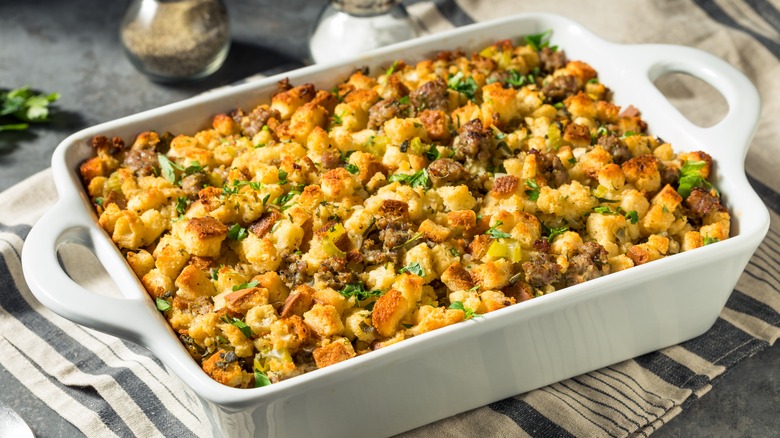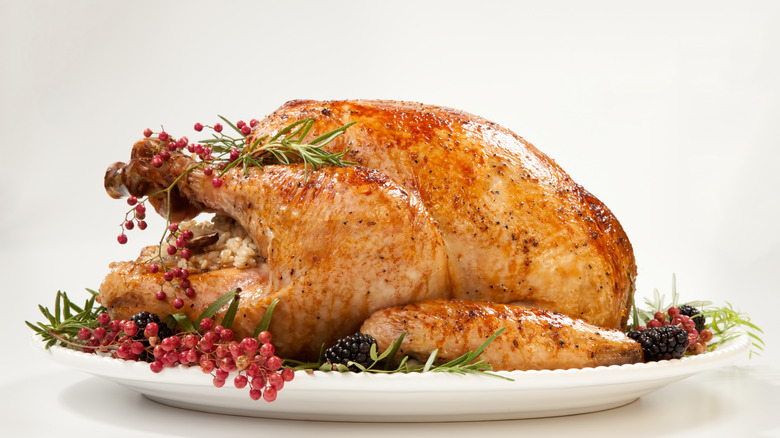The Ancient Roman Origins Of Stuffing
No Thanksgiving dinner plate is complete without a generous serving of stuffing. Voted the nation's top holiday side dish, as reported by Campbell's, stuffing is undefeated in its reign because of the wildly flavorful profile. Although recipes can vary from state to state — cornbread dominates Southern dressings, Midwesterners flock to wild rice renditions, and New Englanders embrace oysters (via Chicago Tribune) — stuffing has stood the test of time. It's a centuries-old crowd-pleaser, and we can thank ancient Romans for our obsession with the perfect texture of stuffing.
At its core, stuffing is a medley of starch and seasoning that is used to fill the cavity of foods like turkey. Depending on where you reside, stuffing and dressing are often used interchangeably to refer to the buttery and herbal filling. However, MasterClass explains that stuffing technically denotes a mixture that's been cooked inside of the turkey, whereas dressing is usually baked separately. Regardless of what you call it, the moist and hearty dish is a welcomed addition to any Thanksgiving meal.
Yet, despite the fact that turkey and stuffing are the dynamic duo featured on today's tables, this wasn't always the case. The first harvest celebration shared by the Pilgrims and Wampanoag at Plymouth Colony in 1621 included venison, wildfowl, and corn, according to Smithsonian Magazine. Whether or not the birds were filled with something remains a mystery, but the idea isn't that far-fetched given our longstanding history of stuffing.
Spelt, spice, and everything nice
The earliest precursor to stuffing dates back several centuries. According to The Wall Street Journal, a 3,700-year-old clay tablet that was discovered in present-day Iraq outlined several poultry-based recipes, including a roasted bird served with a side of flavored bread. However, it was the ancient Romans who brought the combination of starch and protein to new and creative heights.
While it's hard for experts to pinpoint when exactly Romans started stuffing foods, ancient texts from the first century provide some insight. In the "Apicius de re Coquinaria," an ancient Roman cookbook, many recipes used spelt mixed with spices, vegetables, and herbs to create a filling that would be used to stuff inside of any number of animals — whether that be a pig, chicken, rabbit, or even dormouse (via Arcadia Publishing).
As the years passed, Romans continued to get more creative by stuffing smaller meats, like chicken, inside of other meats, like pigs. Eventually, the idea caught the attention of the French, sparking the creation of galantine, notes Slate. Eventually, Georges Auguste Escoffier wrote of a turkey with sausage stuffing in "Le Guide Culinaire," and forever changed our turkey habits — the rest, as they say, is history.

